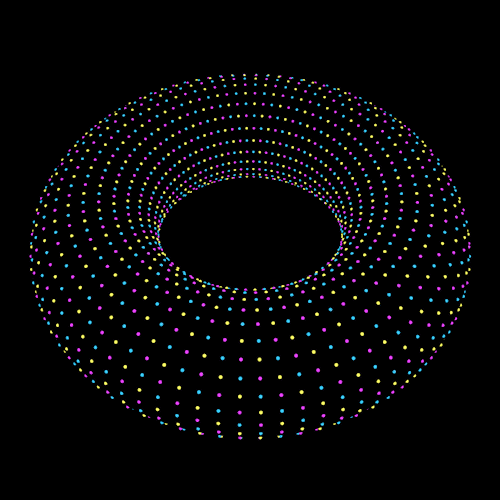Longview, I have just revealed the tip of the iceberg to you. Here is a preview of more.
Science has discovered how another part of the LENR mechanism functions: how the movement of polaritons inside of EMF soliton can produce a dark mode that is an effective EMF black hole. The absence of EMF radiation is the result of the current being divided between two different components, a conventional electric dipole (this is the plasmon in the SPP) and a toroidal dipole (this is the polariton in an SPP) (associated with poloidal current configuration), which produce identical fields at a distance.

If these two configurations are out of phase then the radiation will be cancelled out, even though the electromagnetic fields are non-zero in the area close to the currents.
This also expains how SPPs are dark matter.

Read more at: http://phys.org/news/2015-08-t…nless-revolution.html#jCp
Futhermore, nanovortices have mass.
http://phys.org/news/2015-02-nanovortices.html
This has profound implications for the characterization of cosmic LENR. There is evidence that space is filled with excited hydrogen and helium. These vast areas between galaxies form dusty plasma that produce extreme ultraviolet light and soft x-rays to the tune of 400% above any possible celestial body source.
http://phys.org/news/2014-07-c…nting-reveals-crisis.html
Cosmic accounting reveals missing light crisis
Another clue in the ubiquitous intergalactic soliton based LENR process that occurs through intergalactic space as dark matter has now appeared. There is 400% more extreme ultraviolet (XUV) light in intergalactic space than can be accounted for from other energetic XUV light sources like black holes and young hot stars.
Space is filled with hydrogen covered dust that produces XUV as well as to serve as a source of dark matter which provides gravity that keeps galaxies from flying apart.
Intergalactic dust clouds support the LENR active soliton based XUV factories that upshift heat and gamma photons into the XUV spectrum range.
Some quotes from the article:
"Either our accounting of the light from galaxies and quasars is very far off, or there's some other major source of ionizing photons that we've never recognized," Kollmeier said. "We are calling this missing light the photon underproduction crisis.
"The most exciting possibility is that the missing photons are coming from some exotic new source, not galaxies or quasars at all,"
Isn’t ironic that this new exotic source of XUV photons is one of their most hated and ridiculed pseudoscience concepts: the LENR process.
Continuing further, the dark matter inside galaxies behave as if this strange stuff was coherent and exist in a huge galaxy wide BEC.
So dark matter must be SPPs
http://arxiv.org/pdf/0805.3827.pdf
BEC dark matter can explain collisions of galaxy clusters
<snip>
we have reinterpreted cold dark matter as a Bose-Einstein condensate". So, "the ultra-light bosons forming the condensate share the same quantum wave function, so disturbance patterns are formed on astronomic scales in the form of large-scale waves".
Read more at: http://phys.org/news/2014-07-reinterpreting-dark.html#jCp
<End snip>
Why invent a new particle when SPPs can fit all the requirements of dark matter.
One thing that this idea will imply is that light gains mass when it becomes entangled with electrons.
Light and electrons could be entangled on a cosmological large scale to form a polariton BEC soliton much as they do in LENR.
Polaritons are supposed to be almost massless forming bosons, but are they? .
In NiH reactor will be a great test bed to explore the polariton BEC in understanding dark matter cosmology more deeply.
I had conjectured that Cosmic LENR had mass and it was in fact the source of the mass attributed to dark matter. Well "nanovortices have mass experiment" is the experiment that shows that nano vortices which includes LENR associated vortices have mass.
How is the mass produced? The superconductivity of the “EMF black hole” slows down photons below light speed in the same way that the Higgs mechanism produces mass in the electron. The higgs mechanism and the SPP (EMF black hole) are essenually the same, and example of parallelism in that both produce mass in massless particles.
There is the lithium problem that is solved by rydberg matter and the LENR reaction.
https://www.newscientist.com/a…ings-the-lithium-problem/
SNIP
When we count up the lithium atoms held in stars, there is only one-third as much of the lithium-7 isotope as there should be. Another isotope, lithium-6, is overabundant: there may be as much as 1000 times too much of it.
ENDSNIP
We know from the Lugano test that lithium 7 readily gives its neutron away to form lithium 6
And per Dr. G. Miley, who explains how most of the elements in the universe are produced by the LENR reaction.

